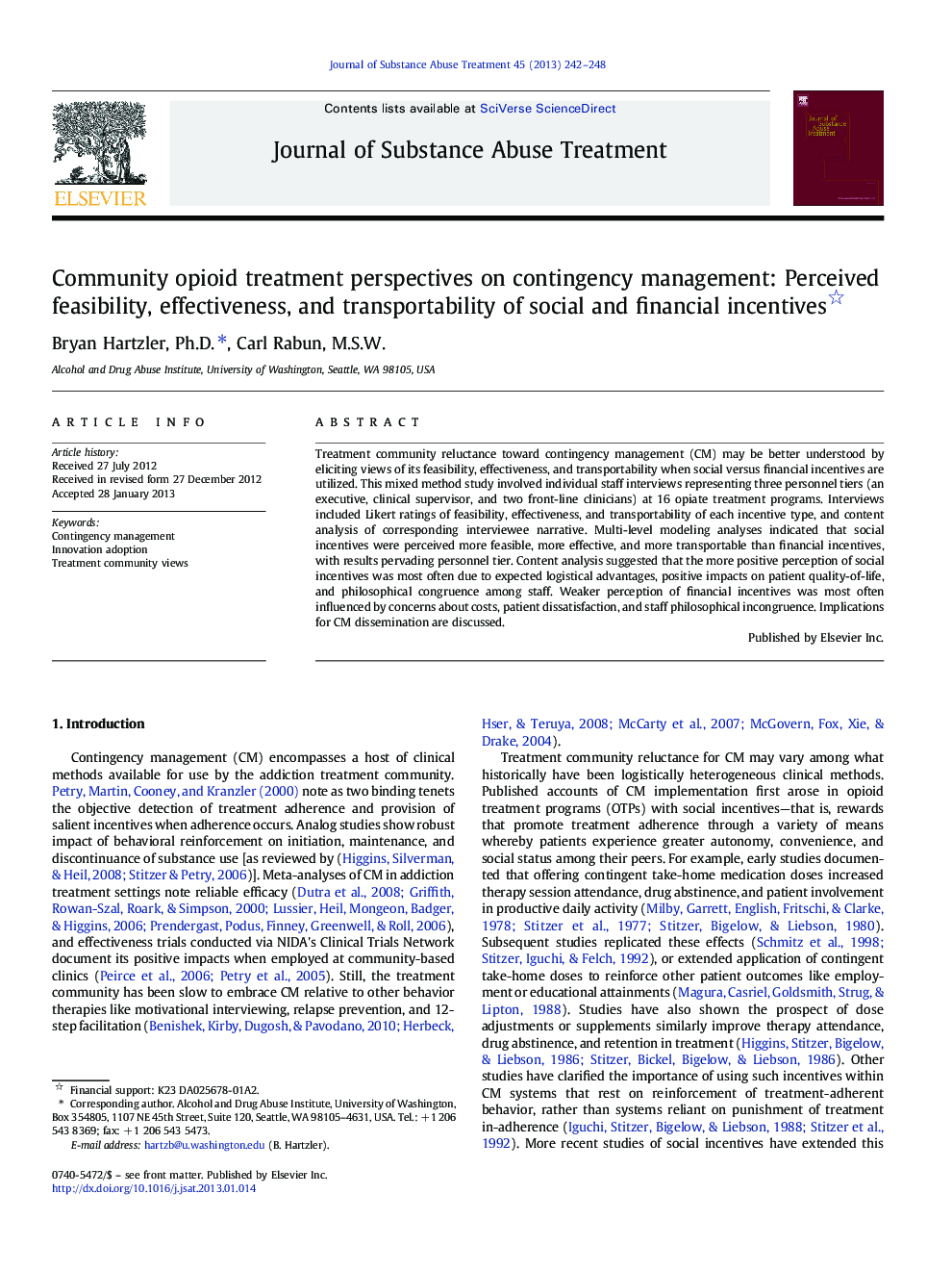| Article ID | Journal | Published Year | Pages | File Type |
|---|---|---|---|---|
| 328438 | Journal of Substance Abuse Treatment | 2013 | 7 Pages |
Treatment community reluctance toward contingency management (CM) may be better understood by eliciting views of its feasibility, effectiveness, and transportability when social versus financial incentives are utilized. This mixed method study involved individual staff interviews representing three personnel tiers (an executive, clinical supervisor, and two front-line clinicians) at 16 opiate treatment programs. Interviews included Likert ratings of feasibility, effectiveness, and transportability of each incentive type, and content analysis of corresponding interviewee narrative. Multi-level modeling analyses indicated that social incentives were perceived more feasible, more effective, and more transportable than financial incentives, with results pervading personnel tier. Content analysis suggested that the more positive perception of social incentives was most often due to expected logistical advantages, positive impacts on patient quality-of-life, and philosophical congruence among staff. Weaker perception of financial incentives was most often influenced by concerns about costs, patient dissatisfaction, and staff philosophical incongruence. Implications for CM dissemination are discussed.
